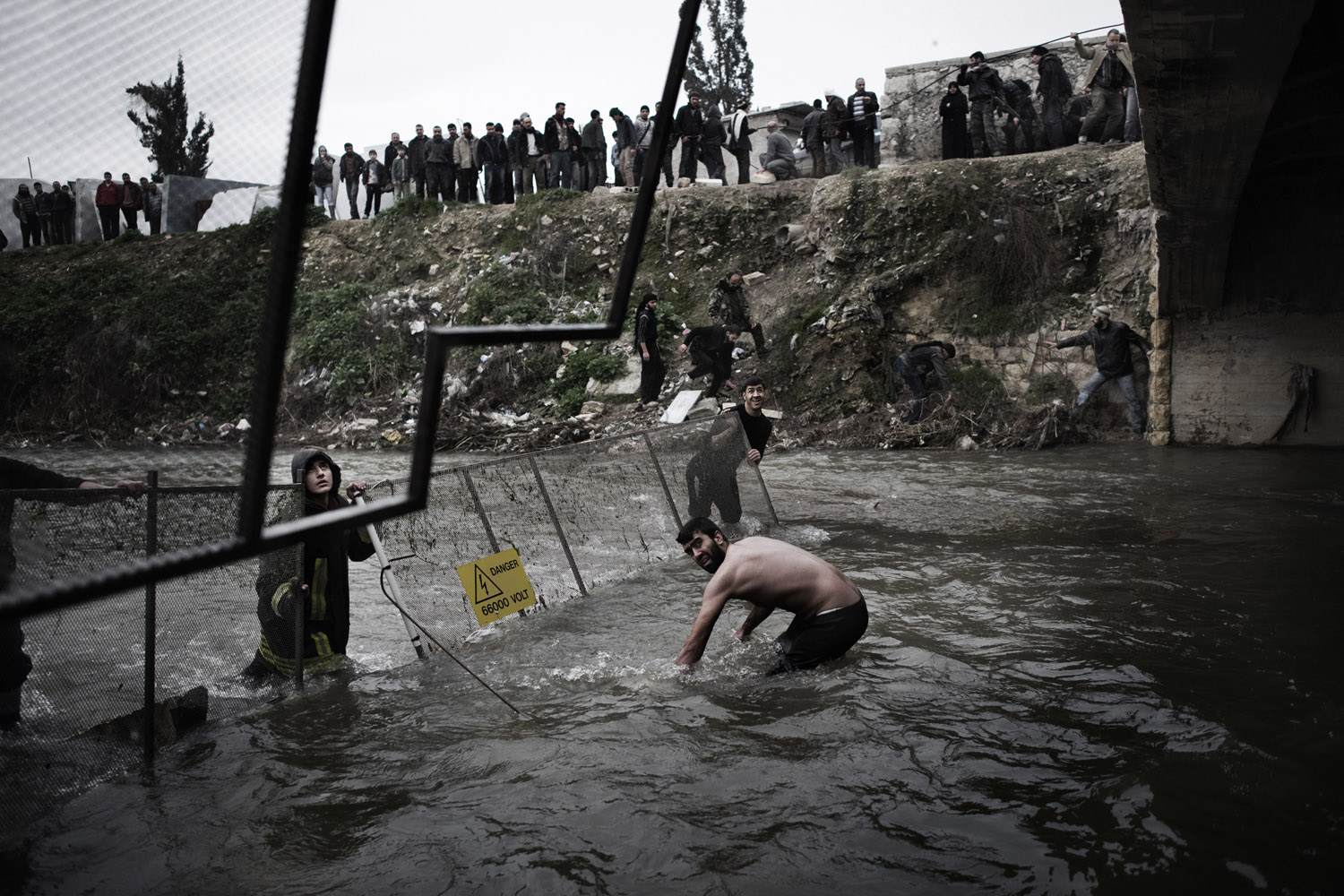
UPDATE, 01/30/13, 4pm EST: One day after Thomas Rassloff documented the largest recorded mass execution of the Syrian civil war, TIME spoke with another photographer, Alessio Romenzi, about the sadness and grief he witnessed in the aftermath of the massacre.
We heard about the massacre when Ruth Sherlock, the correspondent I was working with, received a call from her news desk that the story had broken on the wires. We raced to the site and found a scene of total pandemonium: dozens of bodies were laid out in rows in a schoolyard in the rebel-held district of Bustan al-Qasr. Each was covered by a tarp but their faces had been left exposed so that they could be identified. Hundreds of people flooded the scene — many had missing relatives and had come to see if they were among the dead.
The atmosphere was one of palpable incredulity. Despite the risk of being shelled or bombed from the air, civilians wandered around the site, searching for an explanation of what had happened or how such an act of violence could have taken place. We exchanged confused looks with Syrians at the scene.
All of the victims were male, mostly between the ages of 20 and 40, but there was also 14-year-old boy and an elderly man. All of them had been shot in the head at close range and their hands and feet had been roughly bound with wire, string or tape.
Within a few hours it became clear that most of the victims had been residents in rebel-controlled districts of Aleppo. They were quickly recognized by the locals who flocked to the scene and took their bodies away.
The one common thread in accounts we gathered was that many of the victims had gone missing when they were in government-controlled areas.
On Wednesday afternoon, they were still pulling corpses out of the river. By evening, the total number of dead stood around 100.
Alessio Romenzi is an Italian photojournalist. LightBox has previously featured his work from Syria.
01/29/13, 3pm EST: German photographer Thomas Rassloff has documented the fighting in Aleppo, Syria, since November 2012. On Tuesday, reportedly more than 70 bound and bloated bodies were discovered in a river near the city — the largest recorded mass execution since the beginning of the Syrian civil war nearly two years ago, according to the Daily Telegraph. Rassloff spoke to TIME by email after photographing the scene.
This morning, I woke up to the sound of mortars near where I was staying in Salaheddine. We were on the way to an interview when people began warning us of snipers up the road. As we pulled off, several FSA fighters motioned to us, telling us to come this way — “there are a lot of bodies,” they said. I didn’t understand what was happening because of all the chaos around us.
As we climbed down to the river, we couldn’t believe the horror of the scene. The bodies were bloated and covered with blood; some with their hands tied behind their backs. Several were missing eyes. All were men, and a few of the victims appeared to be young boys.
Nearby residents began gathering at the banks of the river. A large number of police were gathering there, too, some of whom I recognized from an interview days before. One officer I knew gave me a type of perfume to put under my nose to combat the smell.
One by one, the victims were loaded into cars and taken to a nearby school, where relatives began to identify the deceased. I photographed the scene at the river for approximately 30 minutes before my driver felt we should leave due to the risk of snipers and mortars.
The police were having trouble moving the crowd of onlookers, including children, to make way for the bodies being dragged up the embankment. Upon seeing my camera, the crowds asked us to please “take pictures to show the world what happened here — to show what Assad is doing to the Syrian people.”
Thomas Rassloff is a freelance photographer based in Germany.
More Must-Reads From TIME
- The 100 Most Influential People of 2024
- Coco Gauff Is Playing for Herself Now
- Scenes From Pro-Palestinian Encampments Across U.S. Universities
- 6 Compliments That Land Every Time
- If You're Dating Right Now , You're Brave: Column
- The AI That Could Heal a Divided Internet
- Fallout Is a Brilliant Model for the Future of Video Game Adaptations
- Want Weekly Recs on What to Watch, Read, and More? Sign Up for Worth Your Time
Contact us at letters@time.com